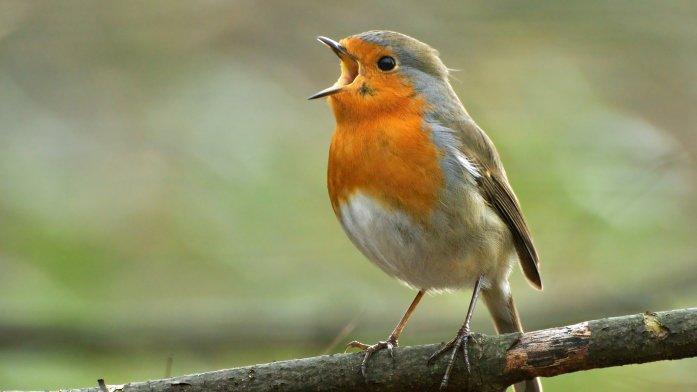Butterflies use magnetic compass to fly across America
- Published
Sir David Attenborough describes the butterflies' epic journey
The monarch butterfly uses a magnetic compass to guide its extraordinary migration thousands of km across North America, scientists say.
Monarchs are known to possess a Sun compass but even on cloudy days they still keep flying south towards Mexico.
In a laboratory experiment, butterflies changed direction when the magnetic field around them was altered.
It suggests that like turtles and birds the insects have a geomagnetic compass, says a study in Nature Communications, external.
It raises concerns the butterflies may be disturbed by human-induced magnetic "noise" - which can apparently disrupt the European robin, a migratory bird.
Miracle migration
The North American monarch butterfly Danaus plexippus is famous for its epic journey from Canada to Mexico.
Every Autumn, despite never having flown more than a few hundred metres, millions of the insects set off across Lake Erie and head south for the warmer forests of the Michoacan mountains.
There they spend the winter - coating the trees in an amazing display which attracts thousands of tourists.
The ancient Mayans believed the butterflies were the souls of the dead, and the insect has become a symbol of North American trade and cooperation.

The compass lies in the antennae - sensitive to sunlight and magnetic fields
"This is a marvellous piece of biology. It's like a work of art. It's inspiring and it can teach us important things about migrating animals," said Prof Steven Reppert of University of Massachusetts Medical School.
For years his team have been trying to solve the puzzle of how the butterflies maintain their direction towards the equator.
Previously they found the butterflies could calculate the position of the Sun, external via light-sensitive molecules in their antennae.
By combining this with their inbuilt biological clock, they create a time-compensated Sun compass.
But even under thick cloud cover, the insects do not lose their way - hinting at an additional, magnetic compass.

Fewer and fewer monarchs are arriving in Mexico
To test for this, the scientists strapped butterflies into a flight simulator, allowing them to point in any direction while flying "on the spot".
They surrounded the chamber with a magnetic coil system and varied the inclination angle of the field - effectively changing the position of the equator and the poles.
The monarchs responded by turning in the direction they perceived as south.
Crucially - the magnetic compass only worked when the butterflies were also exposed to light in the ultraviolet-A/blue range. This was not present in previous magnetic experiments with monarchs - explaining why they failed to find evidence of such a compass, the researchers believe.
"To our knowledge, this is the first demonstration of the use of an inclination magnetic compass by a long-distance migratory insect," said Prof Reppert.
Will Grant reports
"It may serve as an important orientation mechanism when directional daylight cues are unavailable."
Whether the monarchs possess a "map sense" that allows them to recognise specific locations, such as overwintering sites, remains to be determined, the researchers say.
They are investigating the mechanism of the compass - which they believe is mediated by molecules in the antennae known as cryptochromes, which are sensitive to both light and magnetic fields.
A similar compass may be present in birds and sea turtles, but the butterfly is much easier to study and could reveal clues to their behaviour.
Learning how the monarchs perform their miracle could also aid their conservation.
"People are concerned - currently they are threatened by climate change, herbicides and the continuing loss of milkweed [their primary food source] and overwintering habitats," said Prof Reppert.
"We're used to seeing about half a billion butterflies at the overwintering sites. But last year it was probably two orders of magnitude lower."
And now there is new vulnerability to consider: "The potential disruption of the magnetic compass in monarchs by human-induced electromagnetic noise," said Dr Reppert.
He points to a recent study of the European robin, which found that even weak electromagnetic fields from electrical devices and AM radios can apparently interfere with the birds' internal compass.
- Published19 February 2014

- Published8 May 2014

- Published11 September 2012

- Published22 November 2011